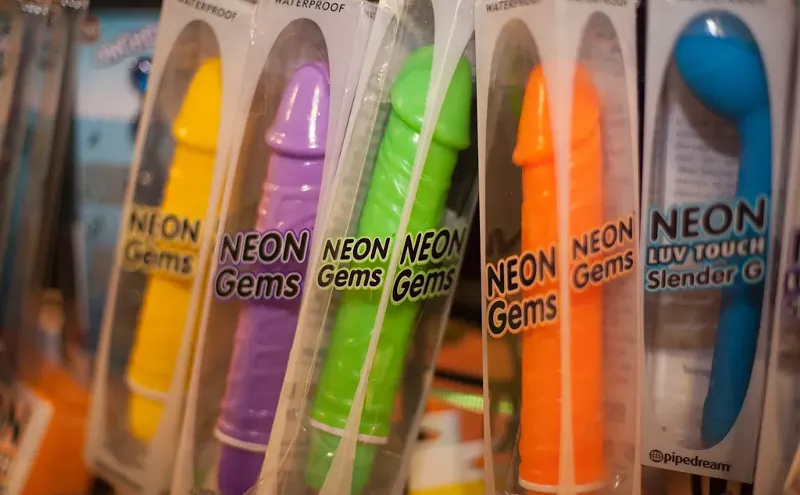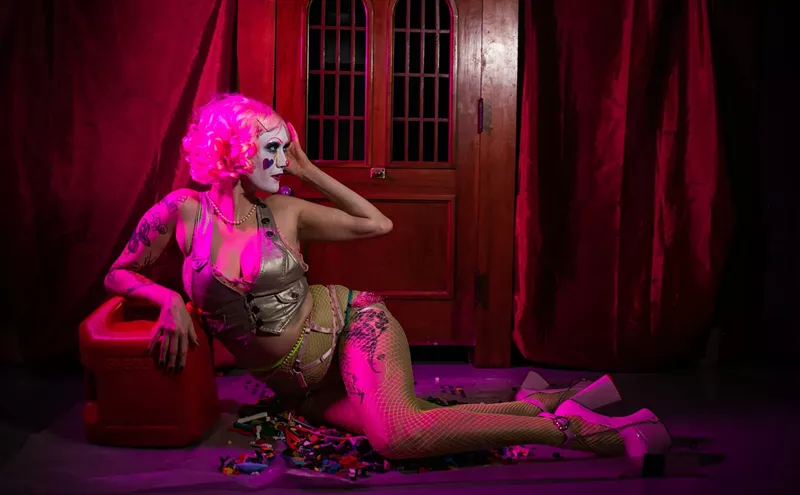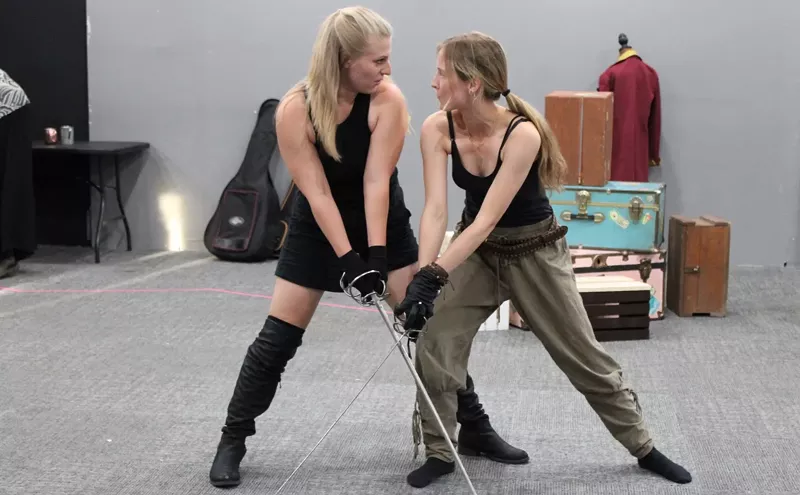Bob Knox and Michael Clapper. The William Havu Gallery is presenting simultaneous solos: Bob Knox: Real Abstract, which is made up of paintings, and Michael Clapper: Portals, which comprises sculptures. Knox is a New York artist; Clapper lives in Denver. The paintings mark various points of progression in Knox's self-appointed task to reconcile representational imagery (typically, hyperrealism) with abstraction — in particular, non-objective abstraction. With his highly accomplished painting technique and the varied and imaginative dichotomies he's conjured up, it's hard to deny that Knox is really on to something in these works. Clapper's sculptures are more clearly in the abstract category, exemplifying a neo-modernist formalism in which simple shapes are used to compose the pieces. Clapper, who has a number of public-art pieces around Colorado, is represented by mostly intimate works here. The largest is "66° North," which is fabulous. Through December 6 at the William Havu Gallery, 1040 Cherokee Street, 303-893-2360, williamhavugallery.com. Reviewed November 20.
Don Quade & Brandon Reese. The current duet at Walker Fine Art is Don Quade & Brandon Reese: Unchartered. Quade has been creating abstract paintings for two decades but has developed a recent interest in prints; both types of work are included in this show. His signature is to lay down a color field as a background, then accent it with small pictorial elements, some representational and others abstract. Quade arranges the small elements — both representational and abstract — on the field in what would seem to be a random way, so that they cover the picture plane in an all-over arrangement. Reese, who trained with some of the most important ceramic artists of the last century — most notably Peter Voulkos — lives in Oklahoma, where he teaches ceramics at Oklahoma State University. The ceramic components he makes are technically remarkable, both for their size and their airiness (and therefore precariousness), being made of skeletal and linear elements that are stacked one on top of another like building blocks. Through January 10 at Walker Fine Art, 300 West 11th Ave #A, 303-355-8955, walkerfineart.com. Reviewed November 20.
Linda Graham. Linda Graham has a background in ceramics, which she exhibited way back in the 1980s, but in the past few years she's discovered digital art — which really couldn't be more different. Whereas she used a lot of direct effort working with clay, she must take a more indirect approach with her digital pieces. They require her to be more of an impresario than an artisan, having the elements produced rather than producing them. In the impressive Linda Graham: Personal Perceptions at Hinterland, the artist has designed a set of curved walls in clear acrylic sheeting that are set up in the darkened room. Some of the acrylic has a yellow cast, some of it green. A video projector using an altered 3-D design program, SketchUp, projects non-objective shapes against and through the acrylic sheets. These projected shapes are in constant movement, and as they run across the curved surfaces of the acrylic, they change, and as they cross the different colors, the light itself changes. Interestingly, it's visually substantial, but pretty insubstantial from a physical standpoint. Through December 5 at Hinterland Gallery, 3254 Walnut Street, 720-309-1764, hinterlandartspace.com.
Paul Gillis. Colorado artist Paul Gillis, though incredibly prolific, has kept a low profile over the past several decades. It's been five years since his last Denver solo, and that alone makes Paul Gillis: otherwhere/otherwhen at Rule Gallery something special. The clutch of major paintings on view, which are signature Gillis, feature the artist's idiosyncratic approach to subject matter, which stylistically refers to underground comix. Gillis has an incredibly proficient technique, which has clearly taken a long time to perfect. The divisions between the pictorial elements in his paintings are crisp and sharp, and the pigments have been applied smoothly. Plus, his instinctual sense for color is thoroughly accomplished, with dark, rich shades dominating. Many of the paintings depict an alien world, with a robot serving as the key component. The robots have heads that resemble cameras; often carried out in black or dark blue, they may function as a stand-in for the artist himself, as Gillis has been a photographer for many years. Through December 6 at Rule Gallery, 3254 Walnut Street, 303-800-6776, rulegallery.com. Reviewed November 20.











